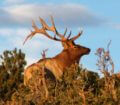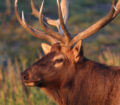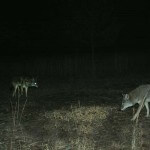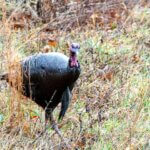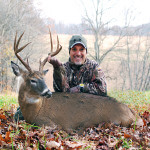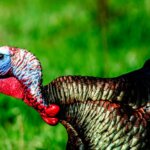Editor’s Note: Bill Custer of Clovis, California, is a member of several outdoor companies’ pro staffs and has hunted elk in Oregon, New Mexico and Utah. But 90 percent of his hunting is in Colorado on public lands where he can buy a tag over the counter. This will be his 35+ season hunting elk on public lands, where he’s taken numbers of elk with his bow.
Secret #9: Know Your Equipment:
Many bowhunters talk about knock-down power. They want to shoot a big broadhead that’ll knock an elk off his feet, and have the same devastating effect as a .300 Win Mag. But that’s not what bowhunting’s all about. Bowhunting is about placing the arrow, so the broadhead passes through the elk’s vitals, creating a hemorrhage that brings the elk down quickly. I’m totally against expandable broadheads for taking elk. I’ve found several elk dead with expandable broadheads in them, where the broadheads didn’t expand. I found an elk for some Texas hunters last year. These guys came to my camp and wanted me to help find their lost elk. My eyes aren’t really good anymore, and my hearing isn’t good either, but I have a nose like a bloodhound. This was Thursday, and they had shot the bull on Monday. They told me the bull’s vicinity, and I got up early Friday morning and went out to look for their bull. They knew the meat would be bad, but they wanted to at least get the horns and ivory teeth, if they could find the bull. These guys had been looking for this bull for 4 days, and I found it in 1-1/2-hours. I followed the ribbons to the hunter’s tree stand and looked at the way the tree stand was facing. I found flagging tape going downstream, because everyone assumed that when an elk is hit he runs downhill. When I couldn’t find any sign downhill, I went up the hill and down to the next drainage. After I’d searched for about 30 minutes, I got a little bit of odor in my nose and followed it. I found the elk. The elk had been shot with an expandable broadhead that didn’t expand. This is why I don’t shoot expandable broadheads.
 Secret #10: Don’t Take Long Shots:
Secret #10: Don’t Take Long Shots:
Many bowhunters can shoot accurately at 70-80 yards, but I’m not one of those bowhunters. If you’re from the East, the likelihood of putting the arrow where you want it at those distances is questionable. If you’re from the West, you’re accustomed to shooting at longer distances in that open terrain. The bull I took in 2009 at 59 yards was the longest shot I’d ever taken on an elk, but I was shooting out to 60 yards every day in camp at that time. The average shot I take at a bull is between 20 and 30 yards. So, even though you may be able to shoot at long distances, determine your effective range and don’t plan to take a shot further than you can shoot effectively, because the bull you spook, miss or wound is a bull you probably may can take on another day.
 To learn much more about elk hunting, get John E. Phillips’ eBooks, print books and audiobooks by going to johninthewild.com/books#elk.
To learn much more about elk hunting, get John E. Phillips’ eBooks, print books and audiobooks by going to johninthewild.com/books#elk.
To get John and Denise Phillips’ free cookbook, “Miz Denise’s Outdoor Cooking: More than 35 Recipes for Elk and Mule Deer,” and “How to Make Venison Jerky – the Ultimate Snack Food” (recipes also can be used for elk jerky), as well as other free eBooks, go to https://johninthewild.com/free-books.

